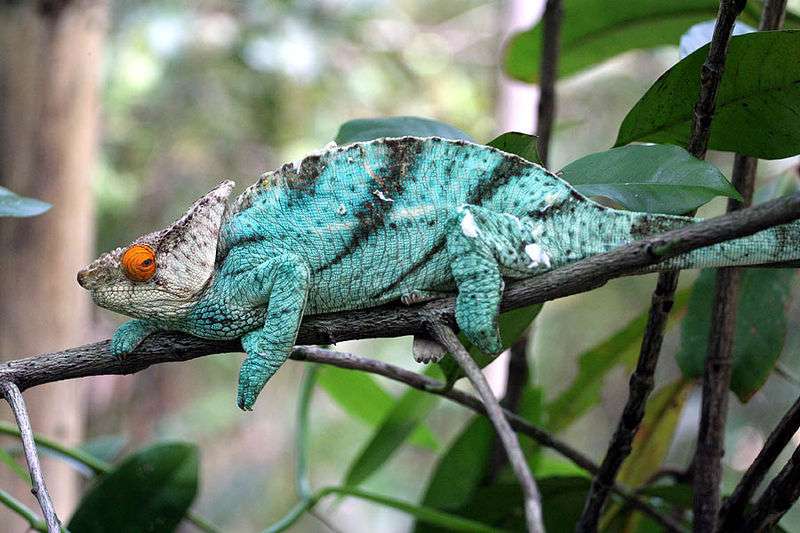
Description:
Scientific name: Calumma parsonii
Life span: 4-10 years
C. parsonii males have ridges going from above the eyes to the nose, forming two warty horns, making them among the largest chameleons in the world.
There are a number of color variations that fall within the normal range of the nominate subspecies, although it is uncertain whether they should be classified as morphs or separate subspecies (at present, most consider them morphs).
Native Region/Habitat
In remote areas of humid primary forest in eastern and northern Madagascar, the species is endemic.

Behavior:
- They give off a passive, largely uninterested, and careless appearance. Yet, during the courtship stage, the males may become hostile and possessive.
- The Parson’s chameleon appears docile, mainly disinterested, and unconcerned about everything happening around it. It controls its temperature by sunbathing in the sun for about 20 minutes before moving to shade. Yet, during the courtship stage, the males may become hostile and possessive.
- The Parson’s chameleon controls its body temperature by spending around 20 minutes in the sun before relocating to the shade.
Care As a pet/In captivity:
Enclosure:
Due to their size, Parson’s Chameleons require a sizable terrarium. For a single adult, a space measuring at least 15080 * 150h cm is needed; however, a bigger space, suited for a couple or group, is needed.
Feeding:
The Parson’s Chameleons accept all insects of the right size since they are not picky. Crickets, locusts, and cockroaches (including the Argentine and Madagascar cockroach) have established themselves as vital food sources. Maggots, larvae, etc. because of their relaxed way of existence. Excessive fatty foods should be avoided.
Moisture:
The extreme humidity of Calumma parsonii’s dwelling space should be replicated in this terrarium. The humidity ranges from 60 to 80% during the day and is almost 100 percent at night. Finding a good balance of ventilation and “rain forest climate” is important to maintain this extremely high humidity.
Table





